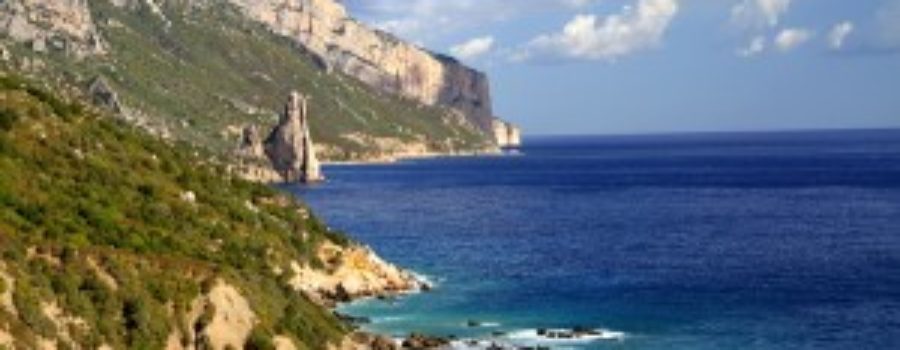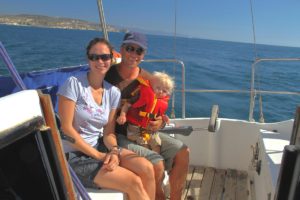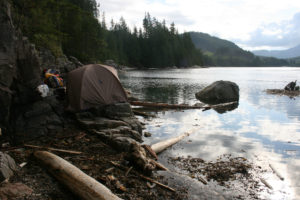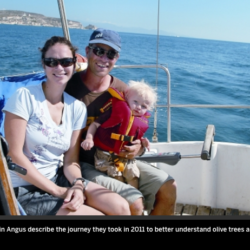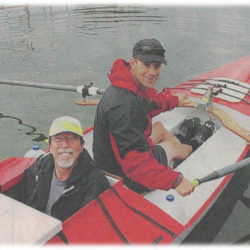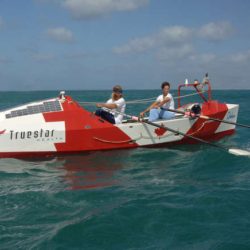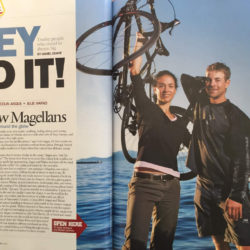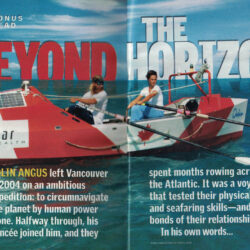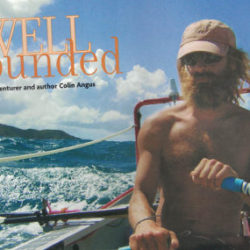We’re now in the third month of our sailing voyage, and have reached the southern coast of Sardinia.
Our latitude is 39 degrees north which means we’re still experiencing balmy temperatures (highs about 25 degrees), however, the winds are becoming much more temperamental.As we sailed down Sardinia’s sparsely populated east coast, we read of a 2000 year old description of the region by Pausanias which is just as appropriate today, “An unbroken chain of impassable mountains, and if you sail along the coast you will find no anchorage on this side of the island, while violent but irregular gusts of wind sweep down to the sea from the tops of the mountains.”
While there are no anchorages for this 225 km stretch – mainly just sheer rocky shoreline – there are a handful of marinas with great stone walls to keep out the angry seas; sanctuaries for us when the winds can no longer be euphemistically described as “spirited” and are undeniable gales.While our baby Leif fares well in the rougher seas, we have to hang onto him so he doesn’t hurt himself as the boat is tossed around.When it gets extremely rough, he’s sent to “Alcatraz” – the forward V-berth with a large cushion blocking the door.Since Leif doesn’t like solitary confinement, one of us always accompanies him.
Prior to our journey down the Sardinian coast, we made a quick trip to mainland Italy.Here we met a leading olive researcher, Dr.Luciana Baldoni from the Institute of Plant Genetics in Perugia.Along with her team, Luciana has revealed many of the secrets of the olive through genetic analysis.Questions about the origins of the olive tree and the spread of different cultivars are being answered by their research using the latest advancements in molecular biology.The Institute has been gathering olive tree samples from around the Mediterranean basin and is comparing genetic markers to determine where the trees have come from.We have been gathering samples ourselves from several unique trees and locations which will be analyzed by Luciana’s team.
As well as sharing the fascinating details of their research, the olive scientists showed us the rich olive culture in Tuscany and Umbria including ancient olive trees, an olive mill that was powered by a water wheel only 35 years ago, the various terracing techniques and fantastic Italian cuisine – with abundant use of olive oil.
Our next adventure will be visiting the ancient abandoned Phoenician city of Nora here in southern Sardinia.The Phoenicians were instrumental in spreading olives throughout the Mediterranean, so we are looking forward to visiting this remarkably well-preserved city.The city is so old (2700 years old) that part of it is submerged in the sea due to the fact that southern Sardinia is slowly subsiding.These ancient ruins are now a navigation hazard, and our navigation guidebook warns to be vigilante when anchoring in the area to avoid hitting submerged ruins.
Earlier we promised to give some of the finer details of what is involved in sailing on the Med, so here goes:
Finding a boat: For a trip of just a few weeks, chartering is the way to go, but for anything longer you’re probably better off buying and then selling at the end of the trip (our boat will be for sale soon, by the way).Sailboats in the Mediterranean are pricier than in North America, however, have dropped significantly with the economic downturn.Our 27 foot boat was 7000 Euros, and we spent an additional 1500 on gear.
Permits/Documents Required: Boat registration, insurance (while mandatory, it’s not expensive – basic insurance for a year cost us 54 Euros), certificate of competency (for a Canadian a Small Craft Operator certificate will suffice) and VHF radio operator’s certificate.
How Much Does Cruising Cost:It is possible to cruise on a shoestring by anchoring frequently and purchasing your food from supermarkets and markets.While anchoring is free, good sheltered coves aren’t as frequent as other parts of the world, and often it is necessary to come in to a marina when bad weather threatens.Marina prices vary hugely, and the prices drop significantly out of season.The highest price we paid (for a 27’ boat) was 36 Euros for a night in a shabby marina in Spanish village.The lowest for a night was 10 Euros (off season rate) on the east coast of Sardinia.On average (on and off season rates) we paid about 15 Euros a night and that includes electricity and water.About half the marinas provide complimentary showers, and the others require tokens.Swanky marinas are not necessarily more expensive.In Antibes we stayed in a marina that boasts the most mega yachts in the Med (including billionaires row), and were charged a modest 17 Euros a night.
For those wishing to anchor frequently, often the best anchorages are in the more enchanting areas (such as the Calanques or archipelago clusters).It pays to study the pilot books closely to learn where the best anchorages are.We use the Imray Pilot books which are rather expensive, but worth their weight in gold and include maps, detailed descriptions of all marinas and anchorages, local weather conditions, etc.
Often supermarkets are located close to the marinas making it easy to reprovision.Being in a boat isolates you somewhat from inflated prices associated with different regions.For example, we found the French Riviera (renowned to be expensive) no more pricy than any other region.Marina costs were fair, and supermarket prices constant.
Immigration Formalities: EU residents in an EU registered boat don’t need to clear customs or immigration when they pass between European countries.Foreign boats and non EU residents are required to clear with customs and immigration upon arrival in each new country.
How Difficult is It?: Sailing in Europe is like driving in Europe – tight maneovering, quick reflexes required, and a little less open space than back home.Still, any competent sailor shouldn’t have troubles once they get used to the slight differences.Perhaps the most important skill to brush up on is tight manoeuvring by engine.Marinas in the Med are very different from the big open watercades we’re used to at home, and troubles manoevering will, at the very least, be embarrassing.
Generally marinas use a system where boats flank one another, where only the bow or stern is attached to the dock, the other end of the boat is attached to a chain running along the seabed.It sounds complicated, but just spend time inspecting how the other boats are doing it before you attempt to berth your own boat.
In the eastern med, a common berthing technique is to drop your anchor, and reverse up to a pier.Ropes are then affixed to the pier, and the anchor rode pulled tight to hold the boat just off the pier.It sounds straightforward, but can be rather difficult when trying to drop the anchor, steer a boat that doesn’t steer in reverse, and squeeze into a miniscule gap between two shiny yachts with a combined value over ten million.Again, spend some time practicing in advance.
Weather: Temperatures in the late spring, summer, and fall are pleasant (sometimes unbearably hot), but conditions on the sea can be surprisingly nasty.Winds can change quickly from dead calm to gale force, and large powerful waves created on the shallow seas.The good news is we’ve found the weather forecasting to be surprisingly accurate.It’s best if you have internet access so you can compare a range of forecasts.

